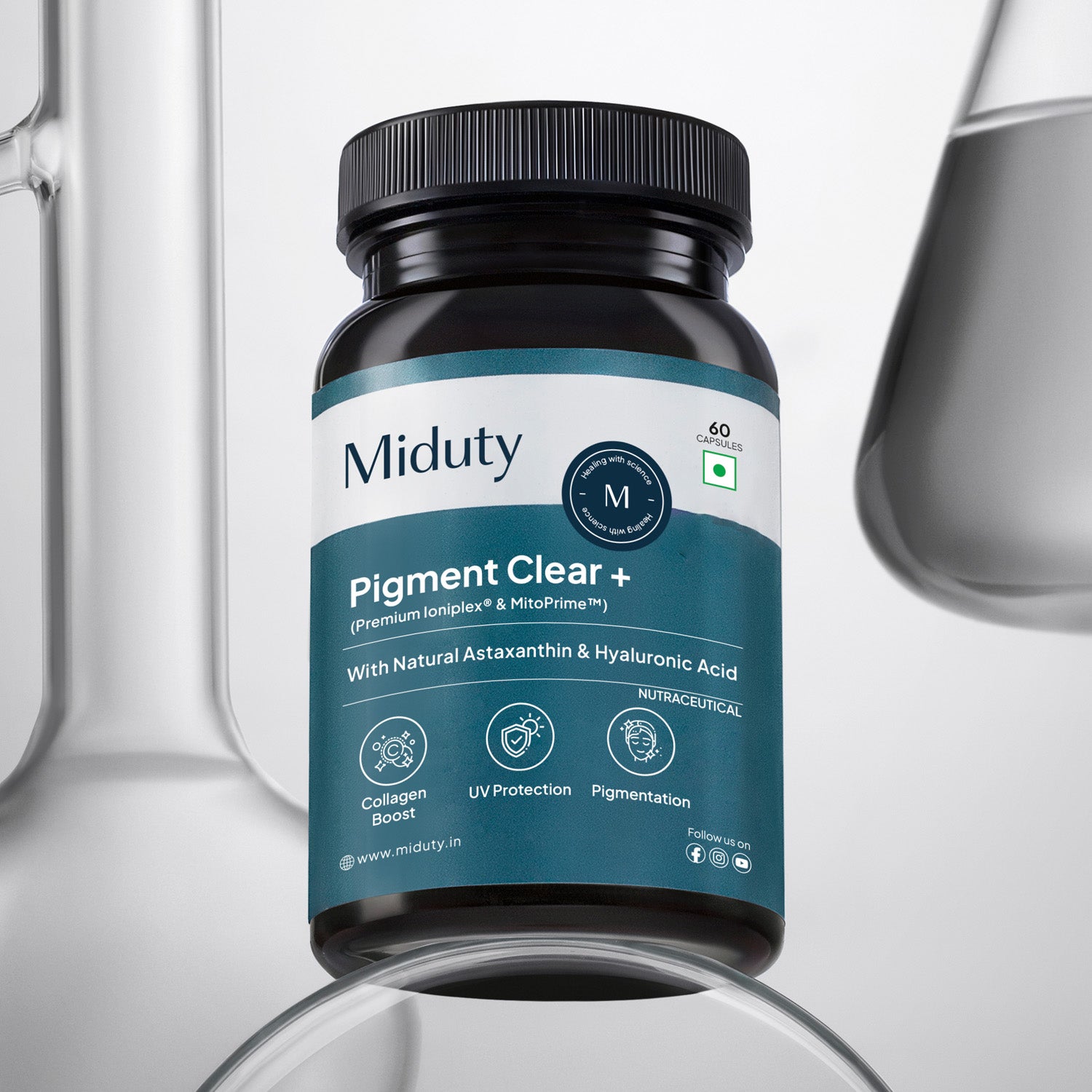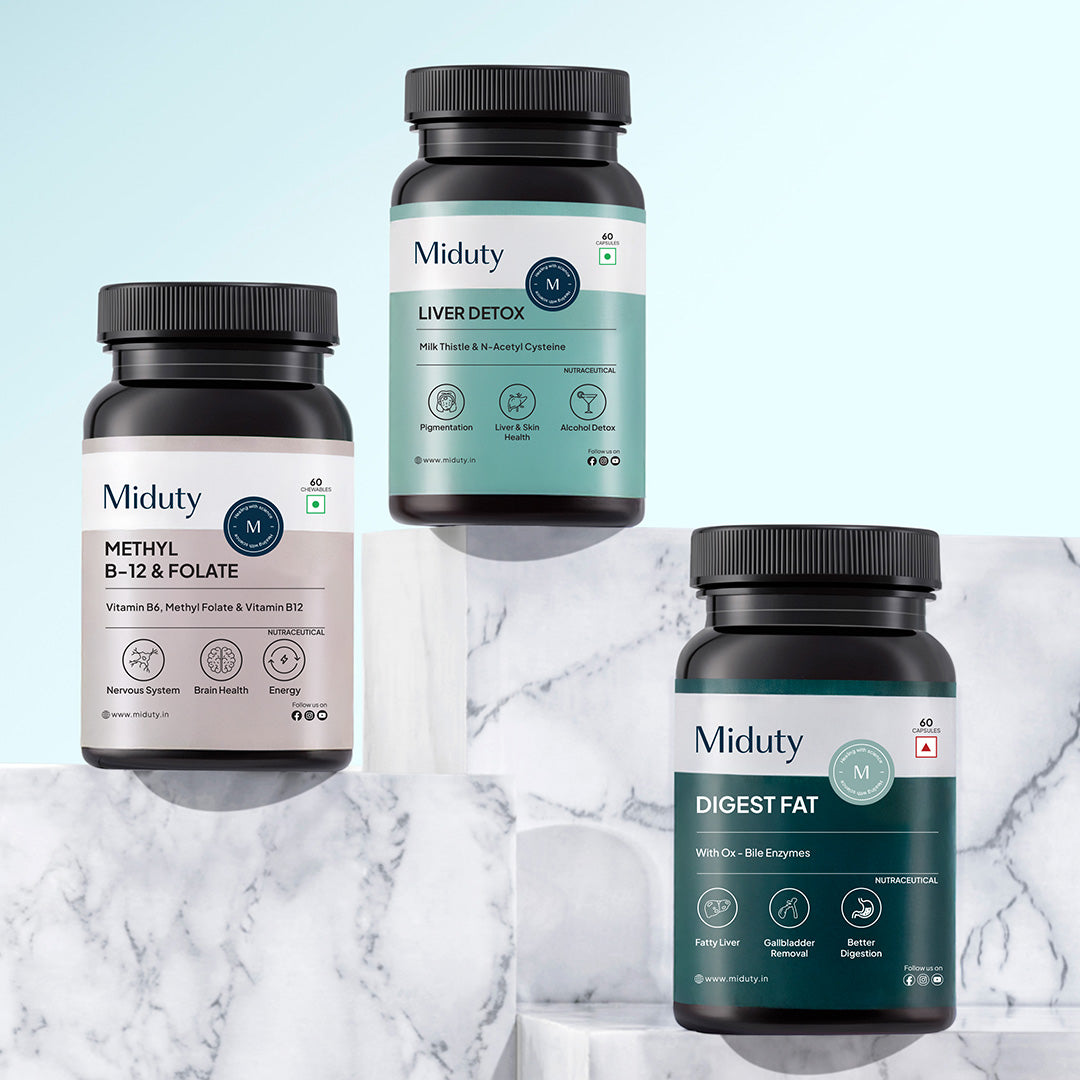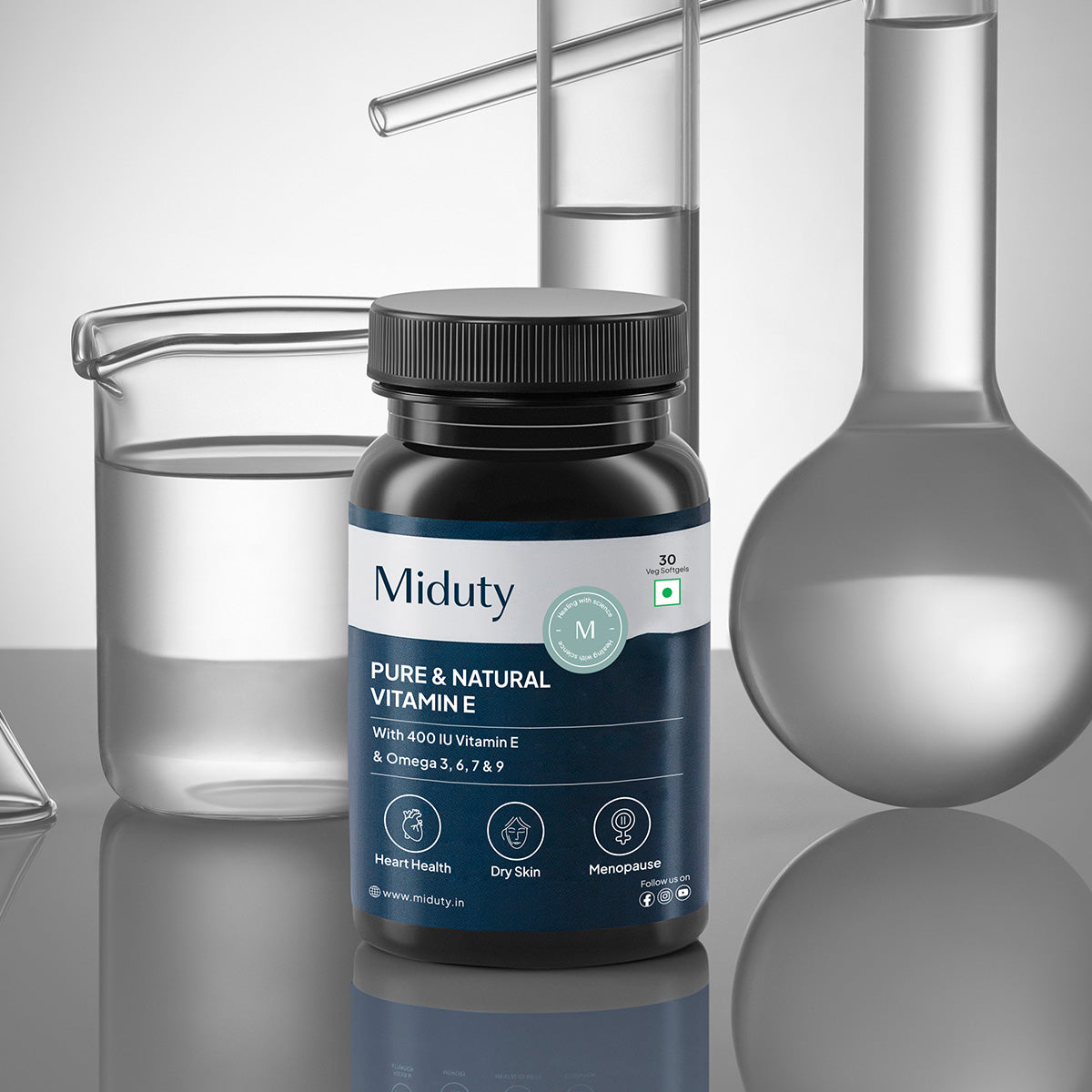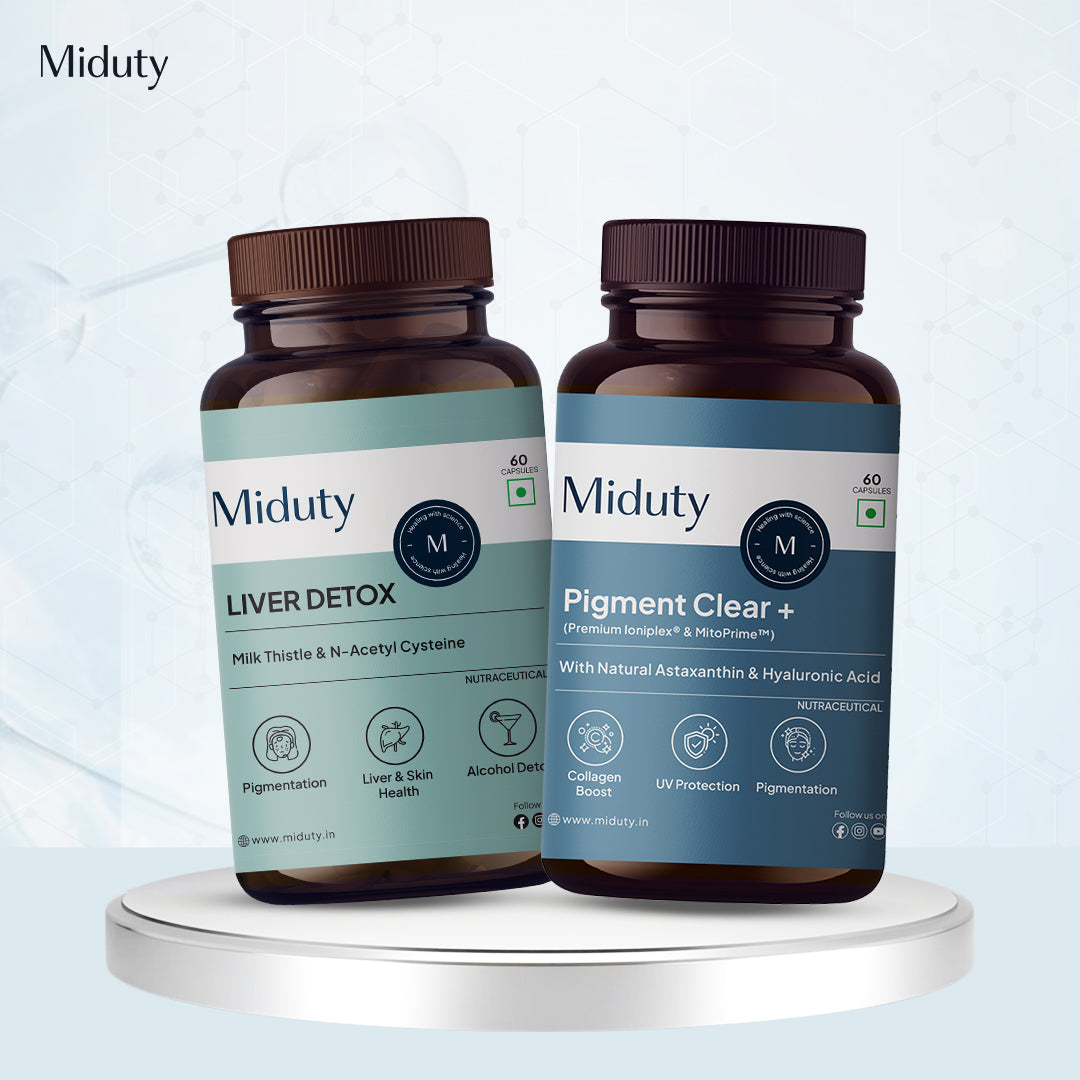
What is Pigmentation on Face?: Reasons & Effective Home Remedies
Is skin pigmentation on your face affecting your confidence? Do you find yourself googling every now and then what is pigmentation on face and how to tackle it? Don't worry-we are here to guide you through it!
In today's world, where glowing skin is often associated with confidence and beauty, any unusual marks, like pigmentation on the face, can feel overwhelming. But what if I told you that pigmentation isn't just an external issue but often reflects internal factors, too?
Many people invest heavily in dermatologists and products hoping to remove pigmentation from face permanently, only to see it return. This is because surface treatments alone may not address the internal triggers for pigmentation on the face. A large number of women have joined me in tackling this issue, and many have seen their dark spots reduce by up to 90%. Want to know how? Keep reading for external and internal remedies, skincare tips, and lifestyle advice on how to manage pigmentation on face effectively.
What is Skin Pigmentation on the Face?
Pigmentation, commonly seen as brown or gray patches, is medically known as melasma or hyperpigmentation. Pigmentation on face occurs when melanocytes-cells responsible for melanin production-go into overdrive. Melanin is the pigment that gives color to our skin, eyes, and hair, and when melanocytes produce it in excess, darker patches can form on the skin. Commonly, you'll see this pigmentation on areas exposed to the sun, like the forehead, cheeks, and upper lip.
In South Asian populations and other skin tones with higher melanin levels, pigmentation on the face tends to be more prominent and persistent. But what causes these cells to become overactive? Understanding the reasons can help us treat pigmentation on the face more effectively.
Reasons for Pigmentation on Face
1. Excess Insulin
One lesser-known factor behind pigmentation on face is an excess of insulin. When we eat high-carbohydrate meals without enough protein or fat to balance them, it can cause spikes in insulin levels. This can activate melanocytes, leading to pigmentation on the skin. [1]
Adopting a balanced, low-carb, high-fat diet can help manage insulin levels and reduce pigmentation. Replacing refined carbs with complex carbohydrates, healthy fats, and proteins can make a significant difference over time. Try swapping rice or bread with options like quinoa, lean proteins, and a variety of colorful vegetables to support your skin from the inside out.
2. Estrogen Dominance
Hormonal imbalances, especially estrogen dominance, are often linked to melasma or pigmentation on face. [2] Estrogen fluctuations can increase melanocyte activity, causing more pigmentation. This is particularly common among women experiencing hormonal changes, such as those leading up to menopause, or for individuals using hormonal contraceptives. Read more on making reversal of hormonal imbalance easy: Estrogen Dominance
To naturally balance estrogen levels, consider adding cruciferous vegetables to your diet, such as broccoli, cauliflower, and Brussels sprouts. These contain a compound called DIM (Diindolylmethane) that aids in estrogen metabolism, helping reduce estrogen dominance. Additionally, supporting liver health is key since the liver processes hormones. Liver-friendly foods include leafy greens, beets, and supplements like milk thistle, known to aid in detoxification and help manage pigmentation. [3]

3. UV Rays
Sun exposure is one of the most common causes of pigmentation on face, as UV rays trigger the production of melanocytes. While your body does have a defense system to combat cell damage, this defense weakens as we age, especially after 30, and is often further impacted by hormonal changes.
Antarctica Krill Oil contains an extra 2mg of astaxanthin to make it more powerful and effective. Additionally, it helps in activating the internal sunscreen in our skin which helps against skin pigmentation. [4]
Apart from this, you should apply sunscreen every two-three hours to protect your skin from sun rays. Now you must be wondering, which sunscreen is best for you? A good sunscreen only contains 5-6 ingredients, the rest are fragrances which are harmful to your skin.
Your sunscreen must include zinc oxide and titanium dioxide, because these substances stick to your skin and bounce the sun's rays off it. The best way to judge its presence in sunscreen is, it adds a whitish layer on your face. Which is actually good to protect your skin.
Secondly, choose a sunscreen that is water resistant and not only UVA protected, but UVB protected as well and with a SPF of 30 as it blocks 97% of the UVB rays.
Other ways to protect your skin from sun rays is to reduce your sun exposure. When you go out, try to avoid spending too much time in the direct sun by finding some sort of shade cover. Furthermore, cover yourself properly while going in the sun by using a hat to protect your skin from sun rays and sunglasses to protect your eyes and the skin around eyes from harmful rays.
How to Remove Pigmentation from Face Permanently at Home Naturally
If you're wondering how to remove pigmentation from face permanently naturally at home, here are some tried-and-true home remedies for pigmentation on face.
1. Aloe Vera Gel
Aloe vera is known for its soothing properties, but it's also effective for pigmentation. Aloe contains aloin, a compound that lightens pigmentation on the skin. It's a gentle, natural way to treat pigmentation on face without harsh chemicals. [5]
How to Use: Before bed, apply fresh aloe vera gel to the pigmented areas. Leave it overnight and rinse with warm water in the morning. Repeat daily for best results.
2. Multani Mitti (Fuller's Earth)

Multani mitti is a natural clay that has been used for centuries to improve skin tone and texture. Its cleansing and cooling properties make it an effective remedy for reducing pigmentation, especially those caused by sun exposure. [6]
How to Use: Mix Multani mitti with a few drops of rose water to form a paste. Apply the mixture to your face, leave it on for 15 minutes, and rinse with cool water. Use this mask once a week to see a noticeable difference.
3. Green Tea Extract
Green tea is rich in antioxidants and anti-inflammatory properties, making it beneficial for skin health. Its active compound, epigallocatechin-3-gallate (EGCG), helps reduce melanin production, thereby reducing pigmentation on face.
How to Use: Steep a green tea bag in hot water, let it cool, and dab the tea bag directly on the pigmented areas. You can also use cooled green tea as a toner on your face daily.
4. Lemon and Honey
Lemon juice is a natural bleaching agent, and honey is moisturizing. Combined, they make an excellent remedy for pigmentation on face.
How to Use: Mix equal parts lemon juice and honey. Apply to pigmented areas and leave on for 10-15 minutes. Rinse thoroughly with warm water. Use this remedy two to three times a week, but be careful with lemon as it can make the skin photosensitive; avoid sun exposure afterward.
5. Apple Cider Vinegar
Apple cider vinegar contains acetic acid, which can help lighten pigmentation on the face.
How to Use: Mix one part apple cider vinegar with one part water. Apply this solution to the pigmented areas with a cotton ball and let it sit for a few minutes before rinsing. Repeat twice daily for best results.
Preventing Pigmentation on Face Long-Term
Prevention is key to managing pigmentation on face for the long term. Here are some preventive steps:
1. Sun Protection: Use sunscreen daily and reapply every two hours. Wear a wide-brimmed hat and sunglasses for additional protection.
2. Balanced Diet: Include foods high in antioxidants and vitamins, such as berries, leafy greens, nuts, and seeds. These foods support skin health from within.
3. Limit Sugar and Refined Carbs: These can cause insulin spikes, which may worsen pigmentation. Opt for whole grains and balanced meals with protein, fiber, and healthy fats.
4. Stay Hydrated: Hydrated skin is less prone to damage and pigmentation. Aim to drink at least 8 glasses of water daily.
5. Hormonal Balance: Regular exercise, a balanced diet, and stress management can help keep hormones in check, reducing the likelihood of estrogen-dominant pigmentation.
6. Routine Skincare: Use gentle, non-irritating skincare products. Avoid scrubs and exfoliants that can irritate pigmented areas.
Conclusion
Pigmentation on the face can be persistent, but with the right approach, you can reduce it significantly. Combining both internal and external treatments, such as a balanced diet, sun protection, and effective home remedies, can make a substantial difference over time. With patience and consistency, it's entirely possible to manage pigmentation and restore your skin's natural glow.
If you've tried everything and still struggle with pigmentation, consult a dermatologist for a tailored approach, as some cases may benefit from specific treatments like chemical peels or laser therapy. But remember, achieving clear, radiant skin is a journey-stay consistent, treat yourself kindly, and enjoy the results!
References













